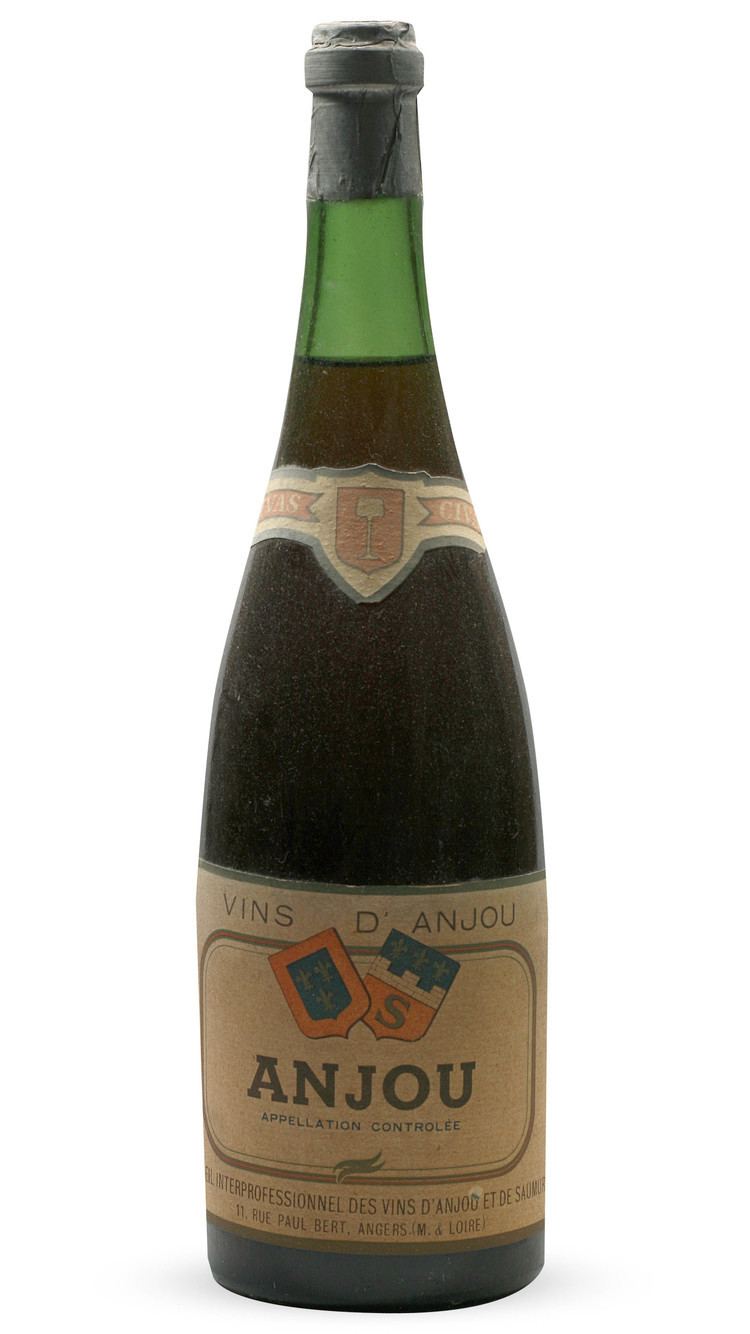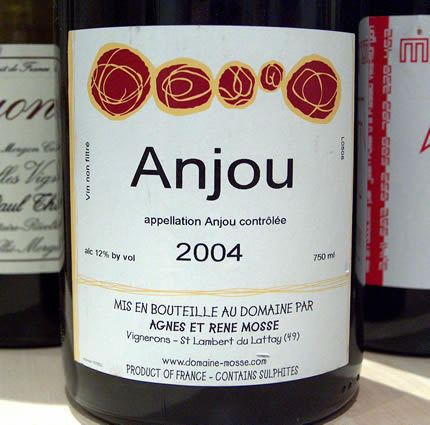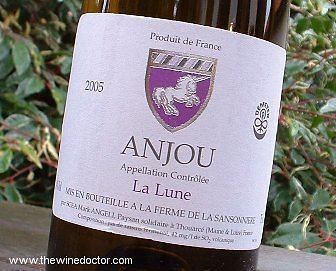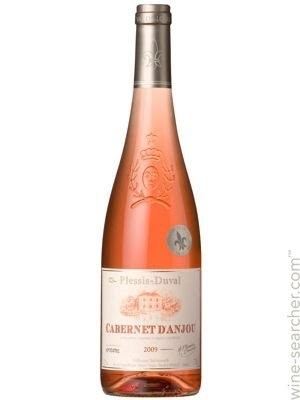 | ||
Rose d anjou wine showdown
Anjou wine is produced in the Loire Valley wine region of France near the city of Angers. The wines of region are often grouped together with the wines of nearby Saumur as "Anjou-Saumur". Along with the wines produce further east in Touraine, Anjou-Saumur make what is collectively known as the "Middle Loire" (as opposed to the "Upper Loire" which includes the wine regions of Sancerre and Pouilly-Fumé. Within the Anjou wine region are several Appellation d'origine contrôlée (AOC)s responsible for a broad spectrum of wines including still red, white and rosé produced with varying levels of sweetness. Extending across the Deux-Sèvres, Maine-et-Loire and Vienne départements, the generic Anjou AOC appellation and its various sub-appellations encompasses vineyards across more than 151 communes.
Contents
- Rose d anjou wine showdown
- Anjou wine
- History
- Climate and geography
- Appellations
- Major appellations
- Sweet wine appellations
- Chaume AOC controversy
- Other appellations
- Viticulture and winemaking
- References

Wine expert Tom Stevenson describes the wines of the area as being a "microcosm of the Loire Valley", featuring wines made from every grape variety and in almost every style produced in the entire Loire wine region. Among the wines of Anjou, Savennières is noted for its dry Chenin blanc wines and the Coteaux du Layon for its sweet dessert wines that includes the botrytized wines of Bonnezeaux and Quarts de Chaume. Various rosé wines are produced in the region under different AOC designation include Rosé d'Anjou, the most basic level made predominantly from Grolleau, and Cabernet d'Anjou which is usually made from Cabernet Franc or Cabernet Sauvignon. For most of its history, dry red wines have represented a small percentage of Anjou winemaking but in recent years the numbers have been steadily increasing—aided, in part, by the 1987 establishment of the Anjou-Villages AOC designation for red wines which can be made from only Cabernet Sauvignon and Cabernet Franc. The Gamay grape of the Beaujolais wine region has had a long history in the Anjou with its own Anjou-Gamay AOC. Grapes from around the region can go into basic Anjou blanc and Anjou Rouge AOC wines.

Anjou wine
History

Wine made from the Chenin blanc grape can be dated to the 9th century in vineyards belonging to the Glanfeuil Abbey located just south of Angers in what is now Le Thoureil. Angevin wines have been held in high esteem since the Middle Ages but where mostly limited to local French markets. Unusual for the time Anjou was known for its unique winemaking technique of blending vin de presse, the wine extracted from pressing the grapes, with the vin de goutte or free run juice that came from the weight of gravity pressing the grape. This vin de presse added extra tannins and color to the wine but could limit the wine's appeal for being consumed young.

Dutch traders in the 16th and 17th century introduced sweet wine production to the region that would feed the growing and prosperous market for such wines in Rotterdam. Anjou wines experienced some brief popularity with the English market being in demand due to their reputation for tasting "ripe and sweet". The high point of the Angevin wine industry was the early 19th century when the market demands of Paris overtook those of the Dutch and plantings flourished throughout the area. But soon the phylloxera epidemic would ravage the region's vineyards and bring this golden era to a close. In response to the devastation, growers in Anjou replanted with a wide range of grape varieties of varying qualities, including hybrid grapes. Even with this massive replanting, vineyards in the Anjou still number less than half of the acreage planted during the peak years of production.
Climate and geography

Located along the Loire River near the town of Angers, the region of Anjou has a mild continental climate with some maritime influences due to its close proximity to the Atlantic Ocean. This influence is tempered by the forests of the Vendée department to the southwest which absorbs the brunt of the rainfall and winds coming in off the Atlantic. Annual rainfall totals for the region usually hover around 19 inches (500mm). The vineyard soils close to the Loire River are composed primarily of carboniferous rock and schist. Chenin blanc, in particular, seems to do well in this soil type.

Most of the wine regions in Anjou are located south of the river Loire, with the one notable exception of Savennières which is located on the right bank of the river just south of Angers. The tributaries of the Loire, particularly the Layon and Aubance, play significant roles in the area's wine production with vineyard planted on their right banks and sheltered from wind by nearby hill sides. The Aubance and Layon flow parallel to each other going northwest towards the Loire and when the climate is favorable can help promote the development of noble rot that is at the heart of the region's sweet wine production.
Appellations

Within the Anjou wine region are several Appellation d'origine contrôlée (AOC)s responsible for a broad spectrum of wines including still red, white and rosé produced with varying levels of sweetness. The region produce more variety of different wine styles, from different grape varieties than any other Loire Valley wine region. The majority of wine production in the region revolves around sweet white wines produced under their own sub-appellation including the Coteaux du Layon, Bonnezeaux, Quarts de Chaume and Coteaux de l'Aubance AOCs. Around 15% of yearly Angevin wine production goes to dry white wines made predominantly from Chenin blanc with the Savennières AOC being the most noted example and Anjou Blanc AOC being the most commonly found on the worldwide wine market. Among the rosés produced in the region are predominantly Grolleau Rosé d'Anjou AOC and the Cabernet Franc and/or Cabernet Sauvignon based Cabernet d'Anjou with the later being more widely recognized for quality than the former. Grapes from the region also go into third style of rosé known as Rosés de Loire, which can include grapes from across the Middle Loire Valley though the bulk of the production is centered around Anjou. This style of rosé is completely dry and can be made from Pinot noir, Gamay, Grolleau, Cabernet Franc, Cabernet Sauvignon and Pineau d'Aunis.
The production of dry red wines has been steadily increasing since the late 20th century spurred on, in part, by the creation of the Anjou-Villages AOC in 1987 for premium red wine production. Made predominantly from Cabernet Franc, some of the most ideally situated vineyards located south of Angers in the Coteaux de l'Aunbance AOC was given their own distinct sub-appellation in 1998 known as the Anjou-Villages Brissac AOC. The Gamay grape of Beaujolais still has a presence here and its own appellation of Anjou Gamay AOC. Gamay, as well as a variety of other red wine grape varieties, can also be produced under the catch-all appellation Anjou Rouge AOC.
Major appellations

Sweet wine appellations
Chaume AOC controversy
Along the Layon river is the commune of Rochefort-sur-Loire which contains the village of Chaume with a long making tradition that finally received AOC designation in the early 21st century. In 2003 the INAO granted the request for the sweet wines from this region to be called Chaume 1er Cru des Coteaux du Layon AOC. Made entirely from Chenin blanc, these wines are most often the product of passerillage or "raisining" on the vine than of infection by noble rot. Yields were restricted to no more than 25 hectoliters per hectares as grapes were harvested with a minimum of 238 grams per liter with at least 34 grams of residual sugar in the finished wine. The producers in the Quarts-de-Chaume AOC, located on the plateau southwest of Chaume, took exception to the new AOC particularly the inclusion of the term 1er Cru (or Premier cru) which has a quality association with the wines of Burgundy. The producers of the Quarts-de-Chaume AOC felt that consumers would equate Chaume 1er Cru des Coteaux du Layon as being of a higher quality than their own wines and such their own AOC designation was being devalued. In response to these concerns, the INAO renamed the AOC in 2006 to the shorter Chaume AOC. Quarts-de-Chaume AOC producers still felt that the close associate between their AOC and Chaume was causing damage to the value of their wines and continued to object to the AOC naming. In response the INAO disbanded the Chaume AOC entirely in 2009. Now wine produced in this region must fall under the larger Coteaux du Layon AOC designation.
Other appellations
Viticulture and winemaking
The two major grape varieties of the Anjou are Chenin blanc, known locally as Pineau de la Loire, which is used for dry, sweet, still and sparkling wine and Cabernet Franc which is used mostly for rosé and still red wines. The sweet wine production of Anjou is highly dependent on favorable climate conditions and experiences marked vintage variation from year to year. The character of the vintage and climate will ultimately determine what type of wine will be produced. Many of the vineyards in the Coteaux du Layon, Bonnezeaux, Quarts de Chaume and Coteaux de l'Aubance AOCs are located on sheltered slopes along tributaries of the Loire. In favorable vintages, the late summer and early fall months will bring climate conditions that encourage moisture and mist in the morning and enough sunshine in the afternoon to promote the development of favorable Botrytis cinerea rot instead of less desirable forms of grape rot. In exceptional years where there is enough warmth and dry weather during the harvest months, the grapes will be left on the vine to raisin in a process known as passerille. This method desiccates the wine, removing moisture and concentrating sugars, without adding the nuance of flavor that Botrytis does.
A characteristic of late harvest and botrytized wine production is the harvest of individual grapes in successive passes or tries through the vineyard ensuring only the ripest grapes are picked. Some producers will ferment and bottle the production of each tries separately but many eventually blend them together in order to produce a more balanced wine. The wine is often fermented at low temperatures and for some sweet wines can take up to 2 months. The alcohol level left in these wines can range from 12-14% depending on the sweetness level.
The broad spectrum of wine styles produced in Anjou brings with it a wide variety of winemaking techniques. In areas such as the Coteaux du Layon, the wines are fermented in 400 l (106 gallons) "double-barriques" and submitted to partial malolactic fermentation. The basic still wines of Anjou blanc are made similar to still white wine production elsewhere though, as wine expert Jancis Robinson notes, they do have an historical association with being over sulfited. As red wine production continues to find a market, and plantings of Cabernet Sauvignon increase, more producers are experimented with the use of new oak barrels. In riper years Angevin producers can make more fuller bodied reds similar to those found in the Touraine wine reds but still relatively light when compared to the reds of warmer climates such as Bordeaux and the Rhone.
